Myeloid antigen-presenting cell niches sustain antitumor T cells and license PD-1 blockade via CD28 costimulation
- PMID: 34739845
- PMCID: PMC8861565
- DOI: 10.1016/j.ccell.2021.10.008
Myeloid antigen-presenting cell niches sustain antitumor T cells and license PD-1 blockade via CD28 costimulation
Abstract
The mechanisms regulating exhaustion of tumor-infiltrating lymphocytes (TIL) and responsiveness to PD-1 blockade remain partly unknown. In human ovarian cancer, we show that tumor-specific CD8+ TIL accumulate in tumor islets, where they engage antigen and upregulate PD-1, which restrains their functions. Intraepithelial PD-1+CD8+ TIL can be, however, polyfunctional. PD-1+ TIL indeed exhibit a continuum of exhaustion states, with variable levels of CD28 costimulation, which is provided by antigen-presenting cells (APC) in intraepithelial tumor myeloid niches. CD28 costimulation is associated with improved effector fitness of exhausted CD8+ TIL and is required for their activation upon PD-1 blockade, which also requires tumor myeloid APC. Exhausted TIL lacking proper CD28 costimulation in situ fail to respond to PD-1 blockade, and their response may be rescued by local CTLA-4 blockade and tumor APC stimulation via CD40L.
Keywords: CD28; CD40; CTLA-4; PD-1; TIL; dendritic cell; exhaustion; myeloid niche; ovarian; tumor.
Copyright © 2021 Elsevier Inc. All rights reserved.
Conflict of interest statement
Declaration of interests G.C. has received grants from Celgene, Boehringer-Ingelheim, BMS, and Tigen, and participated in advisory board or presented at Roche, MSD Merck, BMS, AstraZeneca, and Geneos Tx-sponsored symposia (fees received by G.C.’s institution). G.C. has patents in the domain of antibodies, vaccines, T cell expansion, and engineering technologies, and receives royalties from UPenn. P.K.S. is a member of the SAB or Board of Directors of Applied Biomath, Glencoe Software, RareCyte Inc., and has equities in these companies; he is a member of the SAB of NanoString Inc. and a consultant for Merck and Montai Health. P.K.S. has received research funding from Novartis and Merck. D.J.P. receives research funding from Incyte and serves as an adviser, receives fees, stock options, and research funding from InsTIL Bio. R.G. holds a patent for TCR sequencing. J.D. is presently a US FDA employee. R.T., C.N., V.A., and M.A.D. are current employees of Ichnos Sciences Biotherapeutics SA. None of the above declared relationships has influenced the content of this manuscript. The other authors declare no competing financial interests.
Figures
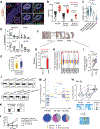


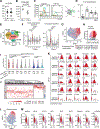
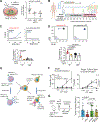
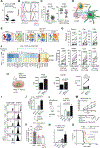

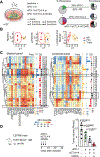
Comment in
-
Rejuvenating dysfunctional T cells in ovarian cancer: CD28 is the license to kill.Cancer Cell. 2021 Dec 13;39(12):1567-1569. doi: 10.1016/j.ccell.2021.10.011. Epub 2021 Nov 4. Cancer Cell. 2021. PMID: 34739843
-
CD28 costimulation promotes an antitumor CD8+ T cell response in myeloid antigen-presenting cell niches.Cell Mol Immunol. 2022 Feb;19(2):147-149. doi: 10.1038/s41423-021-00818-1. Epub 2021 Dec 15. Cell Mol Immunol. 2022. PMID: 34912026 Free PMC article. No abstract available.
References
-
- Andrews S (2010). FastQC: a quality control tool for high throughput sequence data.
Publication types
MeSH terms
Substances
Grants and funding
LinkOut - more resources
Full Text Sources
Other Literature Sources
Medical
Molecular Biology Databases
Research Materials

